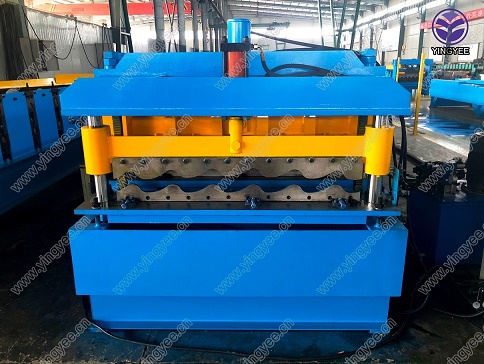
The Evolution of Automatic Adjust C Z-Purlin Sizes Roll Forming Machines
The construction industry is constantly evolving towards efficiency and precision, especially when it comes to the production of steel components. One of the most innovative developments in this field is the introduction of automatic adjust C Z-purlin sizes roll forming machines. These machines are revolutionizing the way purlins are manufactured, making the process faster, more accurate, and adaptable to various construction needs.
Understanding C Z-Purlins
C and Z purlins are essential components used in steel frame buildings, providing support for roofing and structural integrity. Their shape allows them to be lightweight yet strong enough to bear loads, making them a popular choice for commercial, industrial, and agricultural structures. Traditionally, purlins were manufactured using manual methods, resulting in inconsistencies in size and quality. The advent of roll forming technology has significantly improved the manufacturing process.
The Role of Roll Forming Machines
Roll forming is a process that involves feeding a continuous strip of metal through a series of rollers. In this process, the metal is gradually shaped into the desired profile without cutting or welding, allowing for efficient mass production. Automatic adjust C Z-purlin sizes roll forming machines take this concept a step further by incorporating advanced automation and technology to adjust the size of the purlins on the fly.
Key Features of Automatic Adjust Machines
1. Precision Engineering These machines are designed to maintain high levels of precision, ensuring that each purlin produced meets the required specifications. Advanced computer numerically controlled (CNC) systems enable operators to input precise measurements, drastically reducing the likelihood of human error.
2. Quick Adjustment One of the standout features of automatic adjust machines is their ability to switch sizes effortlessly. This capability allows manufacturers to produce different sizes of C and Z purlins with minimal downtime. Operators can quickly change the size settings, meaning that production can be tailored to the specific requirements of the project at hand.

3. Increased Production Speed With the capability to adjust sizes automatically, these machines significantly enhance production speeds. This efficiency not only meets the demands of large-scale projects but also helps businesses save on labor costs and manage their resources more effectively.
4. Versatility Automatic adjust C Z-purlin machines are designed to handle various gauges and materials, from thin sheets to thicker plates, making them suitable for diverse applications. This versatility is crucial in today’s competitive market, where adaptability is key to success.
5. Minimized Waste Traditional manufacturing methods often produce excess scrap material due to inaccurate cuts or size adjustments. With automatic machines, the precision and efficiency lead to reduced material waste, benefiting both the environment and the company’s bottom line.
Implications for the Construction Industry
The introduction of automatic adjust C Z-purlin sizes roll forming machines has profound implications for the construction industry. Firstly, it allows for faster project turnarounds, which is critical in meeting tight deadlines. Furthermore, the increased precision in manufacturing purlins contributes to the overall safety and longevity of structures, as quality control is significantly enhanced.
Moreover, as sustainability becomes a pressing concern in construction, the efficiency of these machines plays a vital role in reducing waste and optimizing resource use. Companies that adopt this technology may find themselves at a competitive advantage, not only in terms of cost but also in their ability to create sustainable building solutions.
Conclusion
In conclusion, automatic adjust C Z-purlin sizes roll forming machines represent a significant advancement in the manufacturing of purlins. With their precision, speed, and adaptability, these machines are set to redefine industry standards and practices. As the construction sector continues to embrace technology, the transition towards automated solutions will likely become more pronounced, ultimately leading to safer, more efficient, and sustainable building practices. The future of construction hinges on such innovations, paving the way for smarter building solutions that meet the challenges of a rapidly changing world.